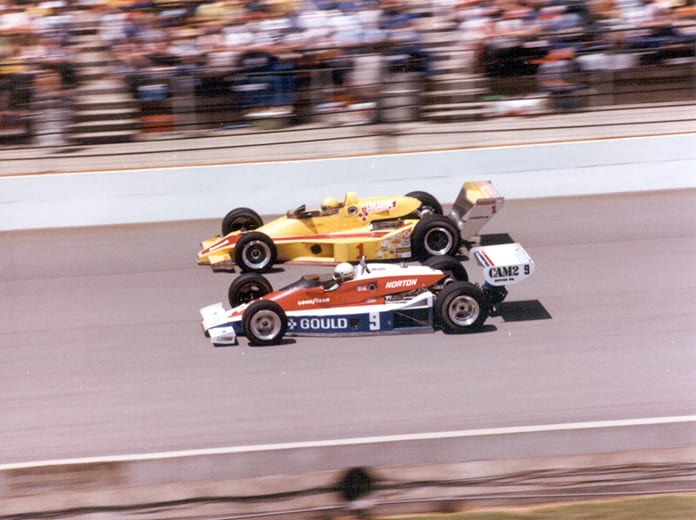In more than a century of fierce racing at the highest level, the Indianapolis 500 has generated many drama-filled months of May. Few, however, match the 1979 edition that featured not only drama, but contention and controversy as well.
The events creating that melodramatic month began in 1978 when a group of disgruntled car owners broke away from USAC and formed Championship Auto Racing Teams.
In retaliation, merely days before the Indianapolis Motor Speedway opened for practice, USAC rejected the entries of six CART teams because they were not “in good standing.”
Those sixteams, the most powerful in the sport, consisted of 19 cars and represented racing’s most recognizable names, including the Unsers, Johnny Rutherford, Gordon Johncock and Mario Andretti.
Of the name drivers of the era, only A.J. Foyt remained on the entry list.
Originally with CART, Foyt defected back to USAC and relentlessly supported excluding the CART teams.
Some accused him of only wanting to eliminate the competition. In typical Foyt fashion, he responded, “I’ve got a better record than any of those SOBs. I’ve blown ’em all off at some time.”
CART responded to USAC’s action with a lawsuit, which ratcheted up the already combative atmosphere. As teams arrived at the speedway, appeals, lawsuits and countersuits abounded. There were more briefcases than helmet bags in Gasoline Alley, more business suits than driver uniforms and more subpoenas than driver contracts.
On the opening day of practice, a federal judge heard CART’s petition, forcing drivers to hustle back and forth between the track and court. Characteristically dramatic, Dick Simon rushed before the judge still in his fire suit.
To the relief of anxious fans, Judge Fred Nolan forced USAC to reinstate CART’s entries. Unfortunately, that action did nothing to ease the petty sniping and controversy.
Someone leaked to the press that USAC President Dick King had once been incarcerated. Gary Bettenhausen then circulated a petition in support of King, but several refused to sign. Meanwhile, King adamantly insisted USAC wasn’t interested in reconciling with CART.
These daily nitpicking, energy-draining incidents overshadowed the on-track action, yet paled in comparison to the turbocharger- boost-pressure cheating conspiracy that unfolded during qualifying.
In an attempt to slow speeds, USAC limited turbo-boost pressure to 50 psi, but a number of teams found a way around the hated pop-off valve used to enforce it. Cars previously practicing at speeds too slow to make the field, suddenly found four and five mph.
When finally uncovered by USAC, fines and disqualifications followed. Then, all hell broke loose.
Wayne Woodward, owner of one of three disqualified cars, boisterously insisted other cheaters remained in the field and filed for a court injunction to stop the race.
Bumped owners and drivers joined the outcry. More bickering, accusations and turmoil followed. Foyt and George Snider, who’d been ducking process servers, were hauled before the judge to explain their actions.
